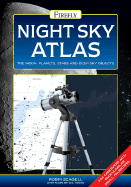
If you are interested in astronomy, then you need to take a look at Night Sky Atlas: The Moon, Planets, Stars, and Deep Sky Objects ( Call #: 520 S278n). This colorful and practical atlas for binocular and small telescope observing was published by Firefly Press in 2005. Because it is a comprehensive atlas that is also simple to use, it is useful for the person just beginning to observe the night sky or for the more experienced observer. The constellation maps attempt to match as much as possible what a person actually sees in the sky. The maps, illustrations and accompanying text make this a worthwhile and enjoyable resource. Check it out at the Al Harris Library!

